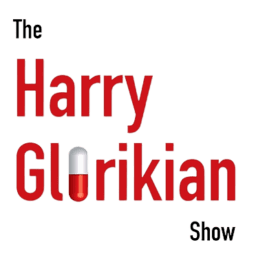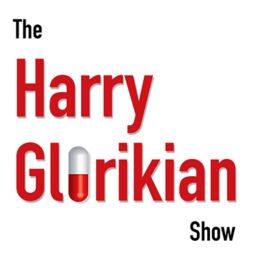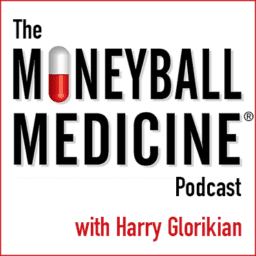Big Data is the new frontier in patient health
The idea that Big Data and technology are changing every aspect of our lives is inarguable. In banking, finance, energy, and commerce, we have seen greater efficiencies, streamlined processes, and better predictive planning made possible by advanced analytics, machine learning, and artificial intelligence (AI). The healthcare industry is no different. World Bank data shows spending on health continues to rise worldwide, with the U.S., Canada, several African, Asian, and European countries spending more than 9.76% of GDP according to 2017 information[1]. As lower-income countries improve the overall quality of life for their citizens, it is inevitable that healthcare spending will increase there as well, putting pressure on fragile national systems. Better use of Big Data is creating a new frontier in inpatient health made even more relevant by the ongoing COVID-19 pandemic.
New Uses for Electronic Health Records (EHRs)
Unlike other highly regulated industries, such as banking, healthcare has lagged in the adoption of technology to improve the patient experience or to improve internal systems. Though electronic banking has been widely available for decades, similar technological revolutions in healthcare have been lacking until more recently. In the U.S., it wasn’t until the 2009 HITECH Act that the adoption of EHRs began to rise—moving from 13.4% in 2008 to >90% of non-federal acute care hospitals by 2017.[2] Despite the dramatic increase in the U.S., this timeframe lagged behind other countries like the U.K., where electronic health records were established in nearly 100% of primary care settings by the mid-2000s[3] but is similar to adoption in Japan[4] and far ahead of African countries, where considerable barriers remain.[5]
Uneven EHR adoption globally worsens existing disparities in low-income countries and others compared to high-income countries and those which have been able to invest in the technology. This is because today’s EHRs are used for more than simply billing or to document patients’ vital signs at clinic visits. EHRs can be regarded as one of the key factors to improve individual patient outcomes and supply longitudinal data for public health initiatives. Clinical decision support systems can alert physicians to patients who are behind schedule for vaccinations, find patients with reportable communicable diseases for public health, and alert doctors to potentially hazardous drug interactions when prescribing. Combined with modules that integrate evidence-based clinical guidelines to help direct patient care, EHRs today can offer one of the biggest ROI for any health system.
What makes EHRs part of the new data frontier in healthcare? Health systems are starting to monetize the vast amount of patient data in their EHRs to further drug discovery/repurposing and clinical research.[6] This can amount to millions of dollars to hospitals and health care organizations from pharmaceutical and technology companies. The more robust and comprehensive a hospital or health system’s EHR, the more valuable it can be—both financially and clinically.
Data at the individual level
Connected devices, like smartwatches, thermometers, and scales, can send health data to your doctor or a smartphone app, are appearing in more homes every year. Existing technology companies, like IBM, Apple, Microsoft, and Google, that have made the leap into healthcare highlight the opportunities Big Tech sees. Just as smartphone adoption has become virtually ubiquitous over the past two decades whether you are in Kentucky (U.S.), Kenya,[7] or South Korea, the global connected health and wellness devices market is poised to take off similarly. Importantly, these devices aren’t only targeted for consumer use: in 2016, the use of these devices in hospital facilities was a $55.3B market[8]—and expected to grow. Data from these devices fed into EHRs with decision-support algorithms help physicians to identify which patients are in danger of becoming septic before any visible symptoms are clear. The value from EHRs and connected devices, while individually significant, takes on greater importance when they are combined.
New applications of connected devices can be found in clinical trials. Extraordinarily expensive and time-consuming, clinical trials are a necessity to decide the safety and efficacy of drugs, devices, and interventions. Patient enrollment in some trials falter, causing trials to be stopped prematurely and limiting the data from the study. Connected devices, such as fitness trackers or smartwatches are one way to improve this widespread problem. Patients can contribute valuable data from the comforts of their home, at their convenience, rather than miss work, have difficulties arranging childcare, or traveling great distances for routine trial visits. These “digital” clinical trials are offering pharmaceutical and device companies a way to increase enrollment and run their trials more efficiently and quickly and can yield essential post-market evidence in realistic patient populations.
Optimization: The Creation of the “SuperDoctor”
Radiologists who diagnose breast cancer 1 year before colleagues would see it on a mammogram. Ophthalmologists who correctly figure out which of their patients with diabetes will develop diabetic retinopathy. Geneticists who can predict which patients with a DNA mutation are at risk of sudden death from hypertrophic cardiomyopathy and which will never develop symptoms of the disease. This is not a futuristic fantasy of the medical world but an emerging reality in places that are using data analytics and machine learning/AI to optimize patient care and research. Examples like the ones above are why Big Data is the next frontier of patient care. The more data that is available to clinicians and researchers, the better the AI algorithms will be at long term predictions.
Data analytics like this are currently expensive, but as we have seen with most technologies, over time the costs decrease, and/or what you get for the same money increases. Weighed against the benefits of earlier disease detection with improved prognoses and lower treatment costs, elimination of low-value care, and increased efficiencies in drug development, the declining costs of these technical investments (e.g. comprehensive EHRs, data analytics) shrink in comparison. For those not convinced, the incredible progress made in genomics should drive the point home.
For each advancement that affects the patient, we see new companies being formed, venture capital ready to invest, and national healthcare policies changing. It’s time to continue the momentum of collaboration across borders to build a truly global healthcare industry. One where patients, doctors, scientists, and politicians use data to make smart decisions based firmly on evidence rather than the status quo. Big Data is the new frontier of patient care: it will help to bring healthcare costs down over time while improving results for global public health and the individual patient—wherever they live.
[1] https://data.worldbank.org/indicator/SH.XPD.CHEX.GD.ZS?view=map&year=2017
[2] Adoption of Electronic Health Records Systems among U.S. Non-Federal Acute Care Hospitals: 2008-2015. https://dashboard.healthit.gov/evaluations/data-briefs/non-federal-acute-care-hospital-ehr-adoption-2008-2015
[3] Thomas H Payne, Don E Detmer, Jeremy C Wyatt, Iain E Buchan, National-scale clinical information exchange in the United Kingdom: lessons for the United States, Journal of the American Medical Informatics Association, Volume 18, Issue 1, January 2011, Pages 91–98, https://doi.org/10.1136/jamia.2010.005611
[4] Kanakubo, T., Kharrazi, H. Comparing the Trends of Electronic Health Record Adoption Among Hospitals of the United States and Japan. J Med Syst 43, 224 (2019). https://doi.org/10.1007/s10916-019-1361-y
[5] Adetoyi OE, Raji OA. Electronic health record design for inclusion in sub-Saharan African medical record informatics. Scientific African 2020, 7:e00304
[6] Genuity Science. Genuity Science Announces Strategic Collaboration with Nashville Biosciences. August 4, 2020. https://www.prnewswire.com/news-releases/genuity-science-announces-strategic-collaboration-with-nashville-biosciences-301104936.html
[7] Muigai N, Mantz S. Global Mobile Consumer Survey The Kenyan Cut. Deloitte. August 2019 https://www2.deloitte.com/content/dam/Deloitte/ke/Documents/technology-media-telecommunications/Deloitte_GMCS_Report_The_Kenyan_Cut_August_2019.pdf
[8] AnalystView Market Insights. Connected Health & Wellness Devices Market Size Worth $657.8 Billion by 2025. September 13, 2017. https://www.analystviewmarketinsights.com/press-release-connected-health-wellness-devices-market/




